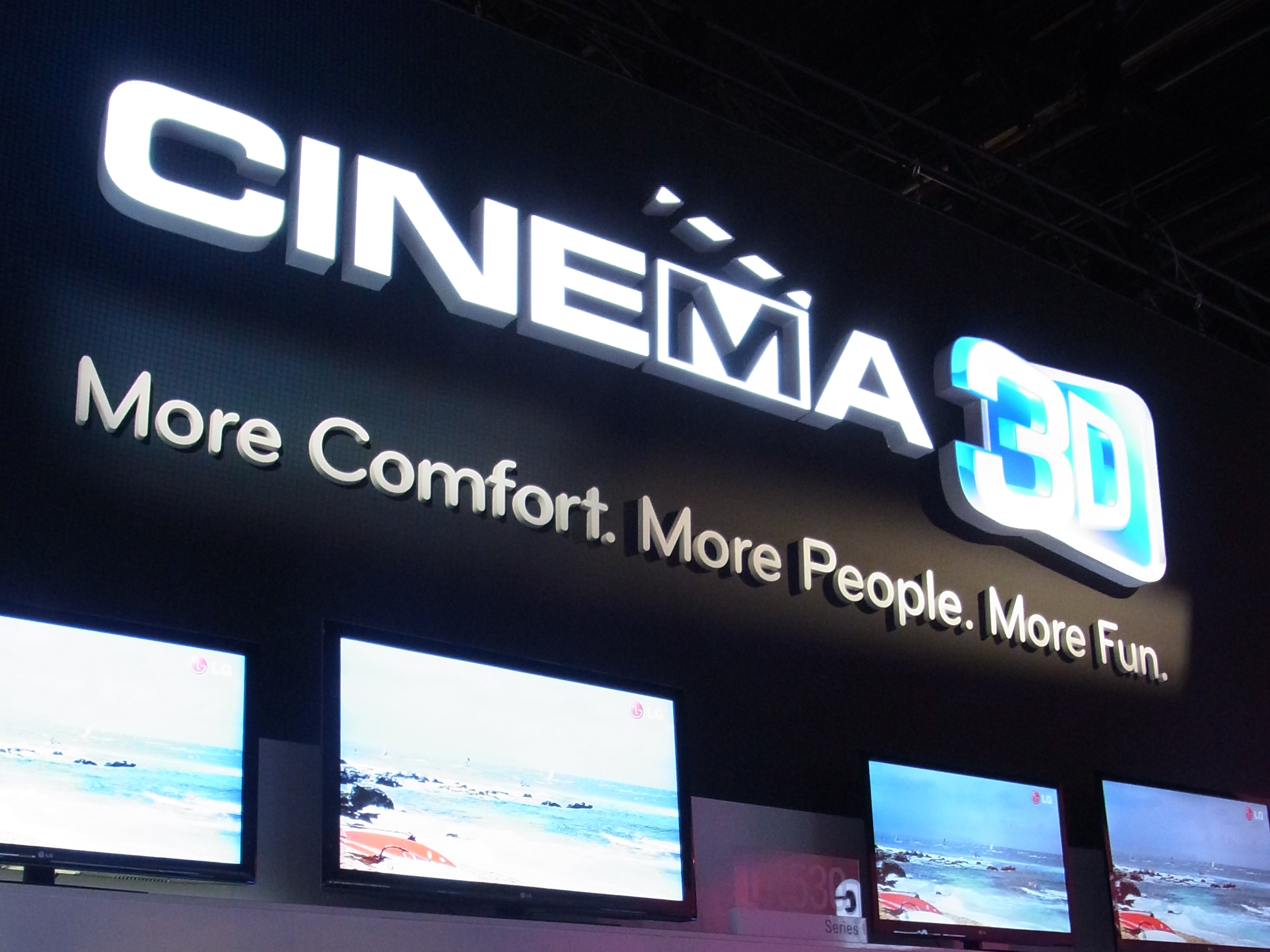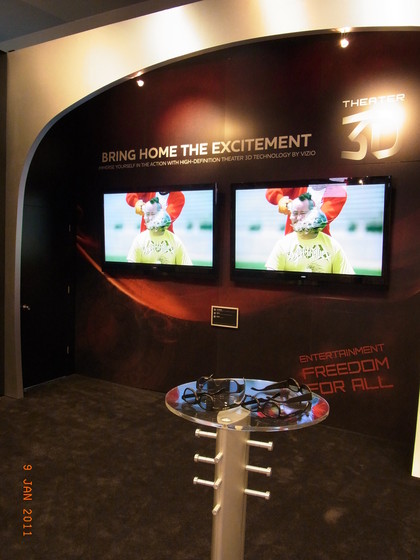Will polarised 3D TVs replace active shutter?

After following the slow burning birth of active shutter 3D TVs over the past two years, we could be about to witness its protracted death.
More brands than we had expected appeared to embrace the far cheaper passive 3D technology at last week's CES in Las Vegas.
In perhaps the biggest story at CES for the AV world, LG announced that it intends to capture 70 percent share of the global 3D TV LCD market in 2011 (that's at least 15 million) with its new Cinema 3D (so called because it's a similar tech to that used in your local 3D cinema or Sky 3D pub) collection of 'passive' or polarised 3D TVs.
It has not quite abandoned active shutter as a technology, but the big push is certainly going to be on passive.
It's basically down to the development of a new film - LG calls it film patterned retarder (FPR) - which makes passive 3D TVs cheaper to produce.
"This is important because while the cost of an active solution is mainly in the glasses, it doesn't scale with screen size and can be made an option," Bob Raikes, managing eEditor of Display Monitor and managing director at analyst firm Meko, told Techradar.
"The cost of a polarising solution has to be applied to every set with the film - it can't be an option - and the cost increases as the screen size gets bigger." That's crucial since early adopters that buy 3D TVs tend to buy bigger-than-average sets.
Sign up for breaking news, reviews, opinion, top tech deals, and more.
Passive vs active shutter
LG cited expensive, uncomfortable glasses, visible flicker and possible health issues as reasons why passive is better than active shutter, but it's not the only company making the switch.
US mega brand Vizio claims that its Theater 3D 65-inch (already on sale at US retail giant CostCo for US$3,499) and Cinemawide 71-inch 21:9 aspect passive 3D TVs generate clearer, flicker-free pictures that offer visibly higher brightness than 'conventional' 3D TVs.
A spokesperson for Vizio told us: "The glasses are much cheaper so ideal if you want to get glasses for all of the family, they're lighter and there are no reflections. We actually have both types of 3D TV available and on sale now, though we're concentrating on our Theater 3D screens."

VIZIO: US brand is also jumping on the polarised 3D TV bandwagon
The inference is that active shutter glasses are bad for the eyes. "The issues are mainly of comfort rather than safety," says Raikes. "With shutter glasses, especially with a small screen, the user may be aware of flickering, not on the screen itself, but on the area around the screen."
Raikes tells us that polarising 3D TVs have been popular in professional applications where people may be using them for many hours, though that's largely down to the weight of active shutter glasses, and the fact that they need recharging.
Philips and Toshiba
Although LG Displays hinted that Philips would follow suit in Europe, the Dutch brand told TechRadar that it would "develop all possible ways of presenting 3D to the consumer, whether that is active, passive or glasses-free."
Meanwhile, Toshiba is definitely making the change - in the US, at least. There was no word on price, but consider the facts: Toshiba's TL515 Series uses a pared-down direct LED lighting system and a 100Hz panel, while its ULC10 Cinema Series of active shutter 3D TVs have vastly more LED arrays behind a 400Hz panel and, of course, send a Full HD image to each eye.
Eschewing the industry terminology, Toshiba prefers to use the language 'natural' versus 'dynamic' 3D; its press materials indicate that 'natural' 3D is 'affordable', 'ideal for longer viewing periods' and '3D gaming', while 'dynamic' is for 'the videophile that cannot compromise on picture quality in 2D or 3D'.

Jamie is a freelance tech, travel and space journalist based in the UK. He’s been writing regularly for Techradar since it was launched in 2008 and also writes regularly for Forbes, The Telegraph, the South China Morning Post, Sky & Telescope and the Sky At Night magazine as well as other Future titles T3, Digital Camera World, All About Space and Space.com. He also edits two of his own websites, TravGear.com and WhenIsTheNextEclipse.com that reflect his obsession with travel gear and solar eclipse travel. He is the author of A Stargazing Program For Beginners (Springer, 2015),